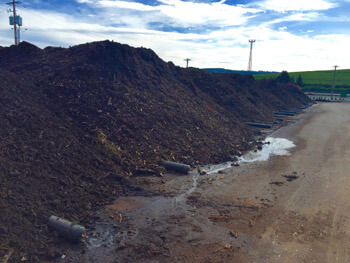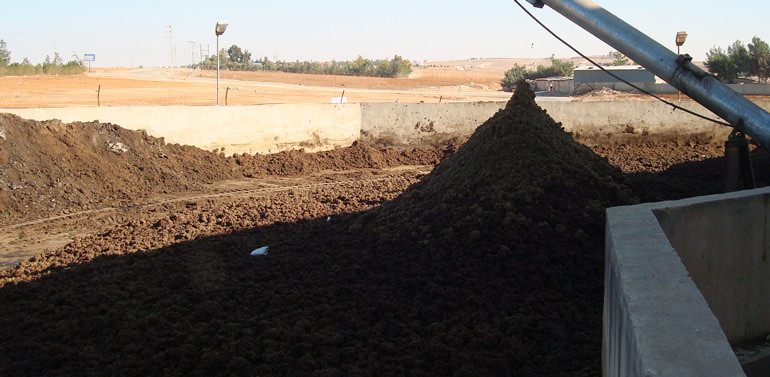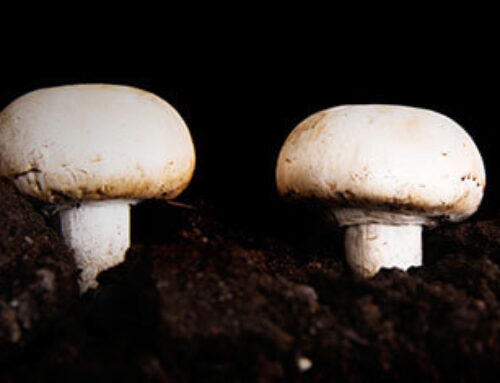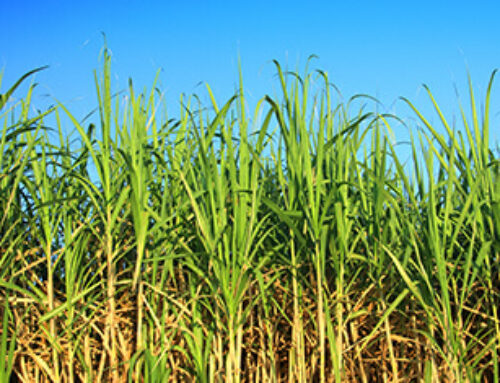Olive Oil Waste Recycling for Compost Production
Composting is a promising strategy to manage the huge volume of the potentially environmentally harmful pomace.
Olive Oil Production in the Mediterranean Countries
There are more than 750 million olive trees in the world, 90% of which are concentrated in Mediterranean regions, like Spain, Italy, Greece, Tunisia, Turkey, Portugal, Syria, Morocco, etc. According to the International Olive Council forecasts, the world olive oil production will reach 2,713,500 tons in the 2016/17 season. Most of the worldwide olive oil production comes from Southern Europe, North Africa and the Near East. Spain, Italy, and Greece are the world’s three largest olive oil producers and exporters. Olive oil production in Spain should be 1.2 million tons. Therefore, olive oil production is of great economic and social importance in Mediterranean areas, especially in Spain.
The percentage production of the total olive oil production
The by-product from the Olive Oil Mill Extraction Process-Olive Mill Waste
In modern olive mills, the most common method for extracting olive oil from olive paste is a two-phase decanter. Because the two-phase extraction system is less complicated, consumes less energy and yields higher quality olive oil, there are approximately 90% of olive mills in Spain use this technology. The modified extraction system uses no process waster and delivers only two streams: olive oil and a single waste- a combination of olive husk and olive mill wastewater- a very wet olive cake, which is called “Olive Mill Pomace”
Olive mill pomace (OMP) is a main by-product of the olive oil extraction industry.
◆ Ingredients of OMP
The olive pomace is composed of fruit matter (olive skins, flesh, seeds and stone fragments), and of different amounts of vegetation and process water increasing the moisture content up to 50-70%.
◆ Features of OMP
Olive wet pomace (also known as olive wet cake, or olive wet husk) is a semi-solid waste that has a strong odor and doughy texture. This residue is characterized by slightly acidic pH, high organic matter concentration (mainly of lignocellu-loseic origin) and the presence of valuable nutrients, especially K.
◆ Amount of OMP
In many Mediterranean countries, the olive oil industrial sector generates a great amount of olive mill waste in a short period every year. In Andalusia, Spain, there are about four million tons of olive mill pomace being produced annually. A major environmental problem in the Mediterranean countries is the disposal and/or treatment of the large quantities of OMW and olive cake produced during olive oil processing.
Promising Option for Olive Mill Pomace Treatment: Composting as Organic Fertilizer
As is known to us all, due to the presence of high concentrations of polyphenols, lipids and organic acids, if olive wet pomace is not properly dried out and disposed of, it will seep into the soil, changing the acidity and nutrient make-up, thus being an important source of soil and water pollution and toxicity.
The composting of olive mill waste was tested as a method for solid waste reuse. Through research and long-term observation of characteristics of composted OMP, it is really an important and effective use to transform OMP into an organic fertilizer and soil conditioner through composting.
The reason why OMP can be processed into compost?

Olive mill waste is rich in potassium, nitrogen, phosphorous and magnesium. The organic matter content in olive wet cake is up to 92%, therefore it’s controlled recycling as an amendment to agricultural soils and mainly to soils poor in organic matter, as Mediterranean soils are, has been proposed as a solution for OMP management.
◆ Support of the Government
According to Italian environmental legislation, olive mill pomace and wastewater have to undergo treatment before their release into the environment. A new regulation permits the use of wet solid waste from the two-phase process as fertilizers on croplands. Such spreading on land must be known to the authorities and supported by a technical report.
◆ Reducing disposal cost
More and more olive mills change the extraction process from a three-phase pres process to two-phase extraction. Therefore, most of the olive mill residues and OMP are semi-liquid and semisolid, contrary to the traditional three-phase in which the solid and liquid residue. Due to the high disposal of olive mill residue, to seek for an option that can reduce disposal cost is necessary and immediate. Compost OMP needs ordinary open space, not evaporative ponds, which can help olive mills reduce related costs.
◆ Simple and cheap alternative
Choosing OMP as organic fertilizer production raw materials, just buy a compost windrow turner and learn related composting technology, and you can begin your composting. It might be an economical option without other ponds construction and investment.
◆ Realizing organic matter cycling
Due to using olive mill residue as raw materials and making compost, it can be used as fertilizer for olive orchards and crops. In this way, it can be regarded as an ecological cycle.
Olive mill pomace composting process and technology

Here is the olive mill waste composting technology:
◆ Because of low porosity, high moisture and low contents of N and P, before composting, OMP should be mixed with bulking agents such as olive tree leaves, which are gathered along with the olive fruit, twigs and small branches, straw, cotton waste and manure to increase the nutrient content or any other materials of animal or plant origin which are available locally. (PS: if necessary, please add some plant ash or dried grass to reduce the water content to 60%)
Add organic raw materials layer-by-layer to open places and make a composting pile in the form of a triangular. Putting some auxiliary raw materials on the bottom of the pile, and then piling OMP and animal manures. On the surface of the pile, add some dry materials(like straws, and olive leaves).
◆ The mixtures are placed outdoor on beaten soil, composted in trapezoidal piles (1.5 m high with a base of 2–3 m, as long as it could be), and weekly turned by using a compost turner machine to ensure biomass oxygenation. In industrial composting facilities, a hydraulic compost turner with the largest capacity is used. In small-scale sites, people can choose a self-propelled windrow turner. With the help of the turner machine, it only takes a few weeks for OMP co-compost making, which reduces time and labor.
◆ The internal temperature of windrows should be measured randomly at ten different points and depths, by using a digital thermometer. The pile temperature will rise gradually from ambient temperature to 45-60 ℃. Turning the OMP compost windrows in time to control the temperature no higher than 60℃.

◆ Moisture content in the piles can be weekly determined by the gravimetrical method, and adjusted by manual irrigation using well water. Both temperature and moisture should be monitored throughout the initial composting period, which is generally characterized by heat release.
◆ The bio oxidative phase was considered finished when the temperature was stable, close to the external value, and reheating did not occur. At the end of composting, the volume of the piles was nearly 50% lower than at the beginning of the process. On the other hand, the moisture content gradually decreased throughout the composting processes and reached values of about 30% at the end of the process.
In the process of making OMP co-compost, there are some factors that are needed to notice.
| pH | It is better between 5.5 – 8, to assure the maximal composting rate |
| Humidity % | Range variable from 50-60% for initial composting (ACT); to go down to 30-35% to the end of the process, depending on the biomass characteristics and the processing typology. |
| Temperature | The optimum temperature is 40-45 °C (over 55 °C, to kill pathogens) |
| C/N ratio | Nutrient balance: between 25 and 35 to avoid nitrogen losses for volatilization (< 25) or decrease speed of metabolic reactions (“/> 35) |
| Porosity | To ensure aerobic process; depending on particle size. The better air-filled pore space: 25-50% |
| Particle size | Surface air for microbial growth |
| O2concentration | Assured by forced airing and/or overturns. The optimal range for the degradative process: 15-20% |

This means of re-utilization can help to improve soil fertility in olive oil farms which are characterized by low organic matter, reduce the cost of inorganic fertilizers, or, for a commercial enterprise, can provide an additional source of revenue for the olive oil mill economy.
As a study has shown, olive orchard soils, after 17 years of using OMP co-compost, are of higher quality than those not using any co-compost. There are many organic matters that are significantly increased in soils using organic amendments, like total organic C, total nitrogen, available phosphorus, etc. In carbonated and silicic soils, the resistant pool of organic matters is enhanced six and eightfold or so, respectively. What’s more, some enzyme activities, linked to C and P cycling, are increased in amended silicic soils ( β-glucosidase is twenty-five-fold higher and phosphatase seven-fold higher ). In particular, organic OMP co-compost application and management makes high organic matter mineralization. The application of OMP co-compost is also a key point for increasing long-term C stability in soil.
We can say that using OMP co-compost which is one of the olive mill by-products is a recycling and promising option, which is environment-friendly and important for long-term agricultural benefits. Therefore, it is an attractive alternative for OMP management in the Mediterranean regions.







